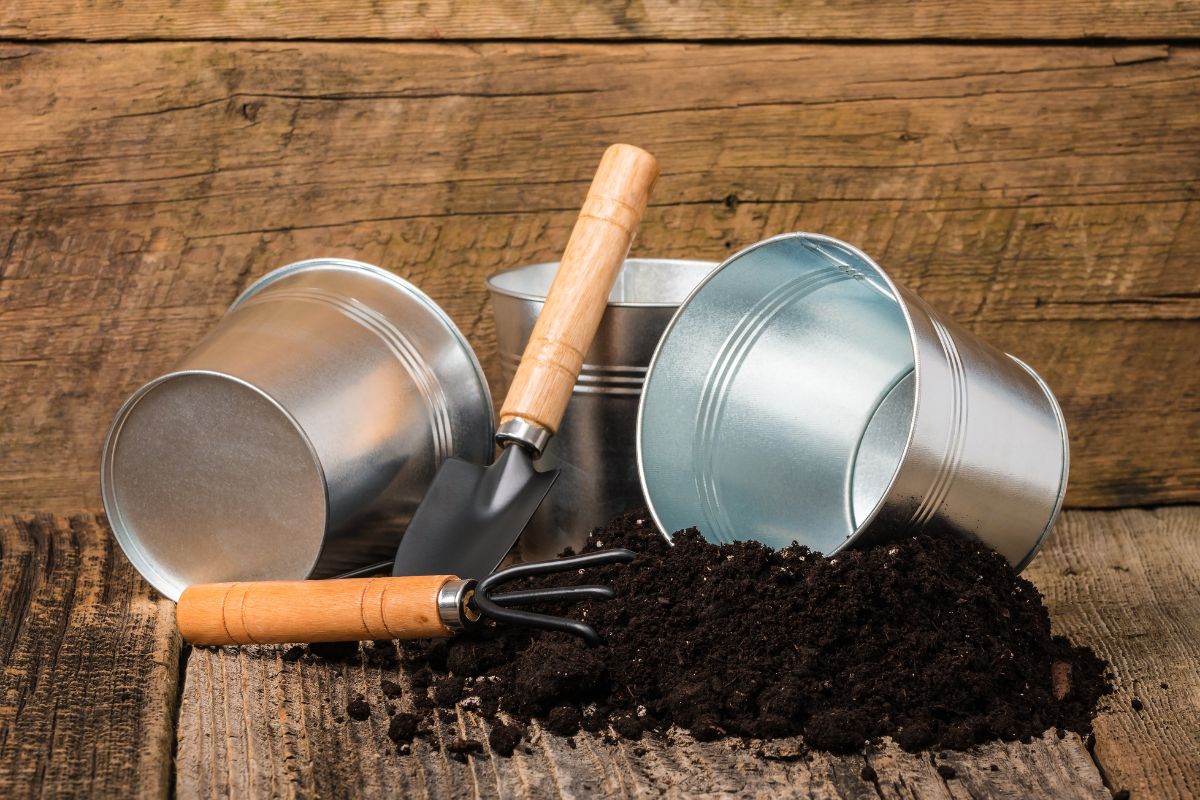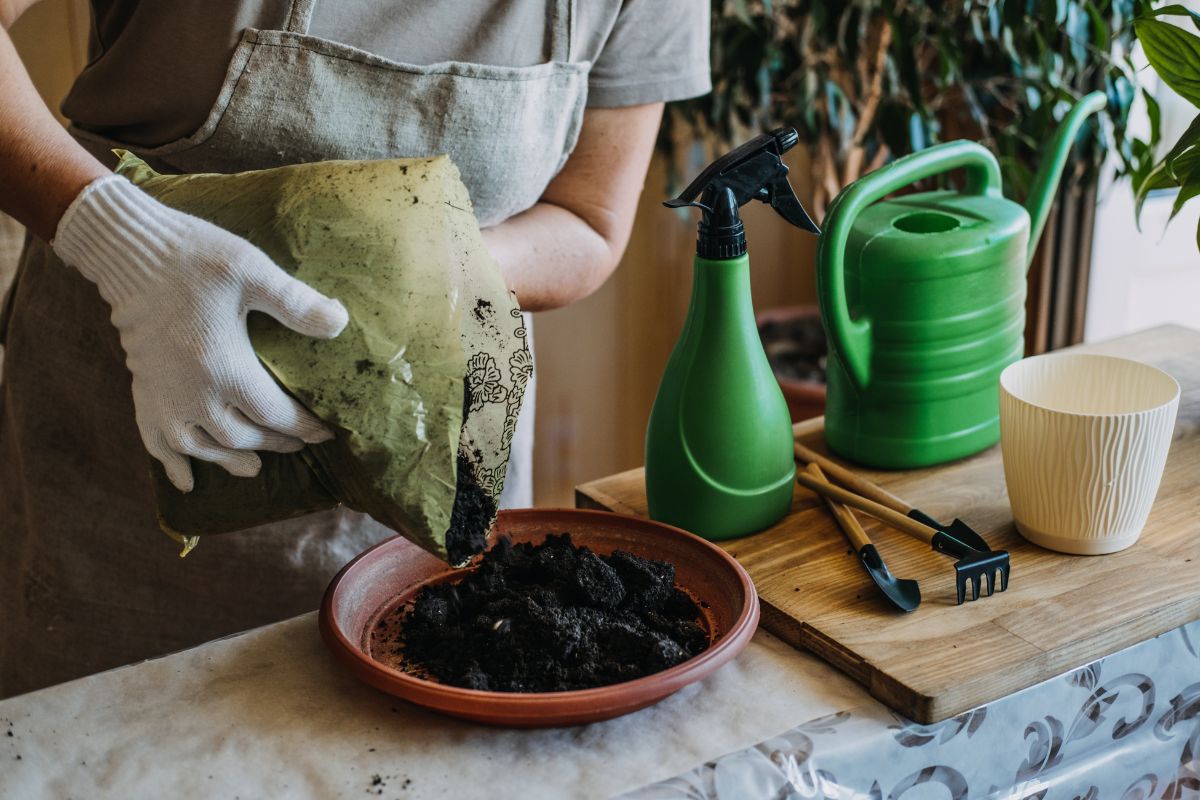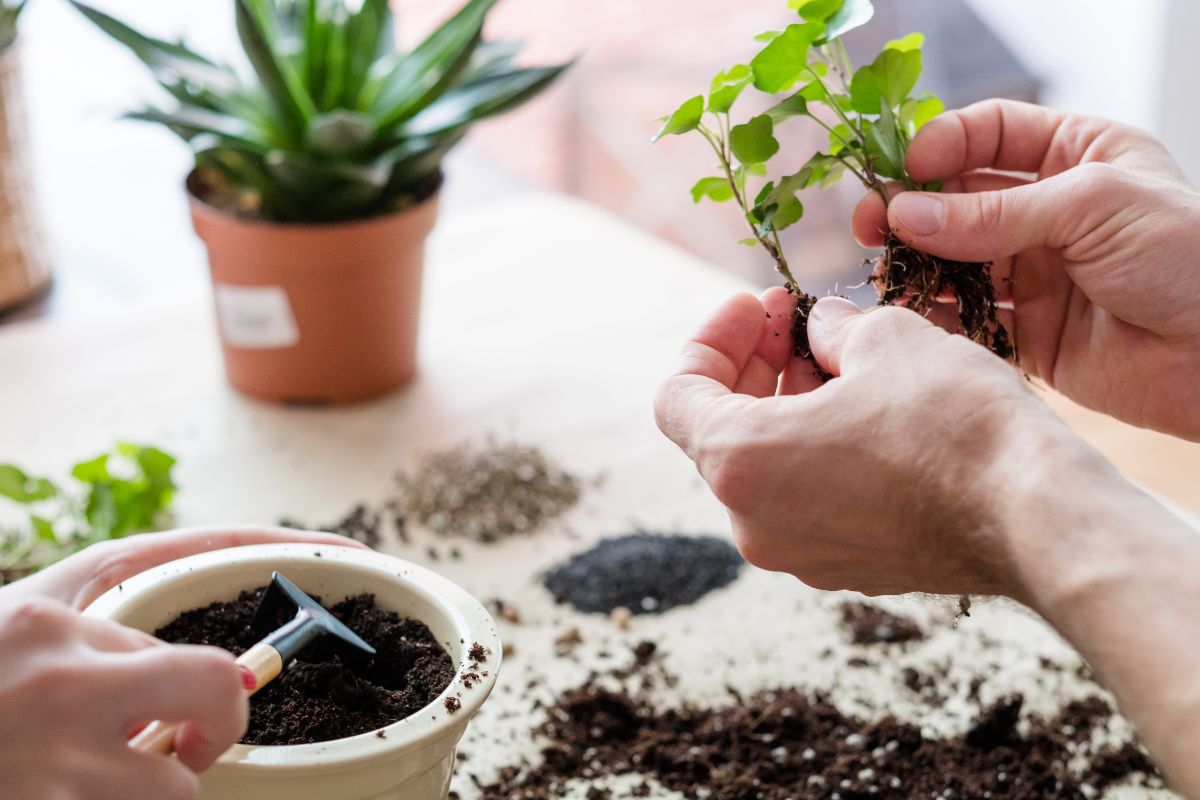How Long Does Potting Soil Last?
Does potting soil go bad? Potting soil packaging is in airtight bags to protect it from moisture and fungus spores.
You can use the soil inside the bag for up to two years if you maintain it in a dry, well-ventilated area. The shelf life of the potting soil shortens if the packaging develops cracks. Your potting soil has a maximum shelf life of 6 months once you open it.

Does Potting Soil Go Bad?
Both yes and no. Potting soil can go bad, but in most cases, it won’t if it’s not in use and if you’re prepared to take a little work to revitalize the soil. Even after storing it for several years without using it, you can reclaim potting soil and make it useful.
Some websites will warn you that potting soil loses its quality with time and will provide you with a long list of reasons to get rid of any potting soil that is more than a few years old. Potting soil doesn’t often go bad as long as it doesn’t meet any of the following conditions:
- It has an awful odor.
- A variety of insects constantly surrounds it.
- Gets contamination from sickness.
- It has a high density and is tightly packed.
The good news is that you can easily resolve most of these problems in the comfort of your home.
How to Tell if Potting Soil is Bad
Does potting soil go bad in the bag? Yes. It will go bad if you don’t store your potting soil properly or for an extended period.
Peat moss and other organic materials included in most potting soils break down over time. This makes the soil less able to retain water and air, which is bad for any potted plant. If any of the following are present, your potting soil may be bad:
Compaction
The term “compaction” describes soil that is densely packed or heavy. In older soil or peat moss-containing mixes, it is a typical issue. Peat moss is only useful for 1 to 2 years, so the soil becomes compacted when it breaks down with other organic materials.
Smells Bad
Your potting soil bag is bad if it smells like rotten eggs. Anaerobic bacteria, which thrive in old, moist, compacted soil, cause this offensive odor.
Mold
If there is mold developing on your soil, it is poor. This typically occurs when you keep moist soil in airtight bags for a long time, especially in warm weather.
Pests
Insects like fungus gnats signify that the soil is unsuitable for growing plants. Fungus gnats consume organic materials in the ground that are degrading, depleting nutrients, and harming plant roots. The soil won’t be suitable for plant growth as a result.
Can You Use Potting Soil From Last Year?
You can recycle potting soil as long as it does not have bacteria from a sick plant. This also depends on the amount of time the old potting soil has been within the containers.
If the soil is still relatively fresh and has only been in use for a few months, you can reuse it again. However, if the soil has been in the pot for at least a year, you should replace it with new soil and use the old soil for something else.
When it comes to plants you keep in containers; the standard recommendation is to replace the potting soil once a year unless the plants have a modest growth rate and you don’t expect to use up the soil very quickly.
If this is the case, you should only need to refill the potting soil once every few years at the most. To revitalize the soil, incorporate slow-release organic ingredients, thoroughly mix them to enhance drainage, and turn the soil to oxygenate it. Mixing the soil also helps to promote drainage.

FAQs on Potting Soil
What is Potting Soil Made of?
Because they serve various functions, different types of potting soil may not include the same components. For example, potting soils intended for outdoor use should be able to hold onto moisture for longer, but soils designed for indoor use should drain water fast.
What are the Characteristics of a Good Potting Soil?
The following is a list of qualities that make good potting soil:
- The best soil is light and low-density, making it easier for air to penetrate the soil.
- Good drainage: The soil you use for container gardening should drain water freely while retaining just enough to meet the plant’s demands.
- Rich in nutrients: The potting soil used for indoor or outdoor plants should include all essential elements (such as nitrogen, phosphorus, and others).
- Beneficial soil microbes should be present, as these organisms increase the nutrients available to the plants that grow in containers.
What Happens if You Use Expired Potting Soil?
Does soil expire? When you use old potting mix, you will experience the following:
- Expired potting mix will have fewer nutrients than new potting soil, resulting in slower plant growth. This results in the plant’s stunted growth, the leaves being weaker, and a delay in producing flowers and fruit.
- Reduced Soil Porosity: Over time, garden soil loses its ability to absorb air and water and becomes less porous. In addition, soil compaction makes garden soil more challenging to work on and limits the availability of nutrients.
- Salt buildup: Because older potting mixes have poor drainage, salts that originate from mineral water and fertilizer deposits build within the soil. This can put the plants under stress and possibly burn some roots.
What Can I Do With Old Potting Soil?
You may grow whatever you want in containers using your clean potting soil, whether it be veggies, flowers, houseplants, or anything else. You don’t have to sterilize and reactivate old potting soil to use; if you don’t feel like doing that, you may still put it to good use.
You can dump straight out of the containers and onto the beds and borders you have already constructed. You can apply it on raised beds or anywhere else in your yard where there are holes or eroding places. It is also possible to include it in compost piles.
You can save money by reusing old potting soil, which will allow you to buy more plants, which is what every gardener wants.
How to Revive Expired Potting Soil
You may bring your old potting mix back to good health by following these steps:
Blend With Fresh Soil
You can revitalize old potting soil by combining it with new soil and mixing the two. To prepare the potting soil you will use for your potted plant, combine equal parts of new and used potting soil.
You can produce your fresh soil mix, but doing so will take a lot of time and may not produce the finest results. You should also avoid potting soils containing peat because this soil is harmful to the environment. You might consider using a biochar potting mix instead, such as Rosy.
The potting mix by Rosy is pristine and ready to use, and it does not include synthetic fertilizers or peat moss in the ingredient list. Instead, it contains pre-activated biochar, airy and balanced compost, and beneficial bacteria that help conserve water, encourage plant development, and combat pests.
You can either incorporate this organic mix into the soil in your pots or add it directly to the pots themselves.
Mix in More Nutrients
To restore the fertility of expired soil, you need to incorporate some organic material, such as compost for planting, into the ground. You can amend around 80 to 50% of your existing potting soil with compost at 20 to 50%.
Compost the Soil
You can turn the old soil into compost if you do not intend to use it. Adding old potting soil to your compost pile will help speed up the breakdown of organic material and discourage insects from entering the pile.
The amount of old soil you include in the compost should not exceed 10 percent of the overall material. In addition, when the composting process is over, you can utilize the mixture to provide nutrients to your plants.
Note that certain components, such as perlite, won’t break down in the compost if they were already present in the prior soil mix.
Add Water
When you want to use old, dry soil that isn’t compact, add water to a pot of soil and then allow the water to drain out of the bottom of the pot. Because of this, the mineral and fertilizer deposits in the ground will drain away. Avoid getting the container oversaturated with water since the soil compacts and the roots rot.
The Best Way to Store Potting Soil
Does unopened potting soil go bad? Because winter presents a unique set of challenges, you will need to take extra precautions to protect the soil from problems such as mold, fungi, illnesses, and pests. The following is a list of tasks that you need to do.
Please consider that most of these recommendations pertain to new potting soil.
If you are keeping potting soil that’s not open, you can place the bags in the can or bag you are currently using. If the soil bags are already open, you can now pour the soil into a container. A huge plastic trash can that is opaque all the way through or an odorless trash bag will do the trick.
After you stuff it with soil, shut it up and put it away in a dry location. Make sure the soil is dry if the bags containing the soil are open. To dry it out before putting it away, you should lay it in the sun on some cardboard or tarp.
Make sure that the soil is entirely clean of dead plants, roots, sticks, and leaves before storing it. The only thing you should be putting away is the soil. During the summer, if you leave an open bag of soil that you had just partially used, it may have some debris.

Parting Thoughts
The organic components you often find in potting soil give it relatively short shelf life. If the bag of potting soil is not open, the peat moss contained within the potting soil will remain usable for one or two years.
However, the presence of additional elements, such as moisture, might hasten the decomposition of these organic compounds, resulting in the potting soil being unusable. Read our article and find out 6 of The Best Soil For Aloe Vera.
